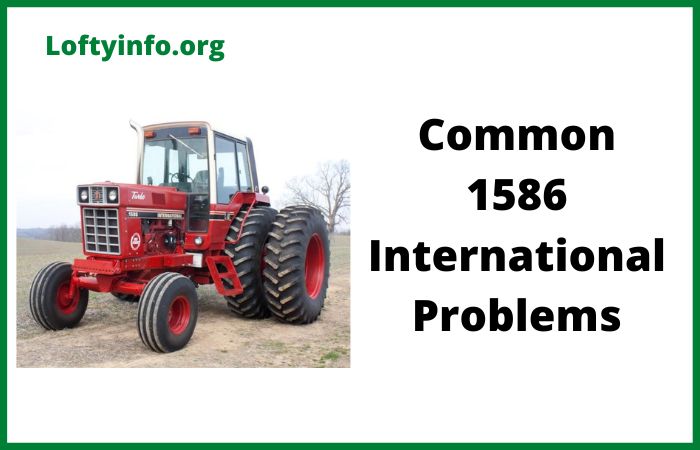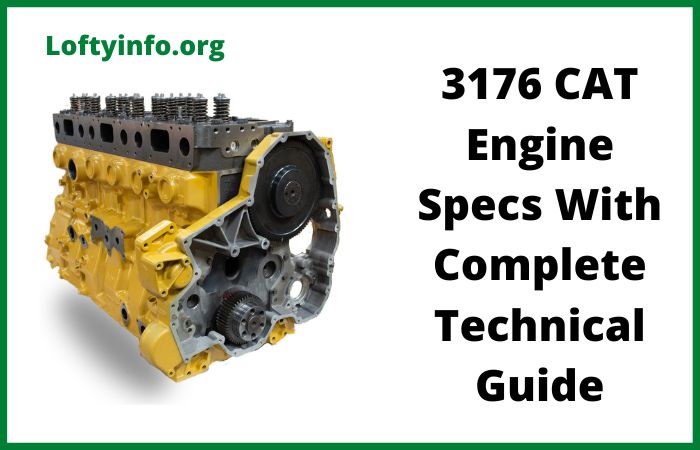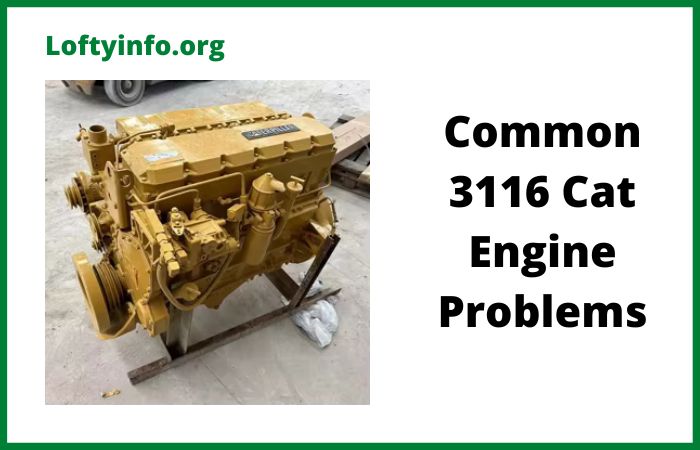Common 1586 International Problems
The International Harvester 1586 remains one of the most powerful tractors from the 86 series lineup, but its reputation comes with known mechanical challenges that owners should understand before purchasing or during operation.
This 175-horsepower workhorse was built between 1976 and 1981 and while it excels at heavy tillage work several recurring issues have plagued these machines throughout their service life.
Understanding these problems and their solutions helps owners maintain their 1586 tractors and avoid costly breakdowns during critical farming seasons.
Common 1586 International Problems
1) Torque Amplifier Failures
The torque amplifier system in the 1586 represents one of the most frequent and expensive problems owners encounter.
This hydraulically operated unit provides high and low range options within each gear but the system develops issues after extended use.
Owners notice the TA slipping under load or completely failing to engage in either high or low range.
The tractor may work fine in one range but refuse to operate in the other or the TA might fail entirely leaving the operator without the benefit of this power-multiplying feature.
The TA typically functions properly for approximately 2000 to 3000 hours before requiring major repair work that involves splitting the entire transmission.
The hydraulic clutch packs inside the TA wear down from normal operation and high heat conditions accelerate this wear.
Contaminated hydraulic fluid carries abrasive particles that damage clutch surfaces and seals. Improper adjustment of the TA linkage and control valve leads to incomplete engagement and excessive slippage.
Low hydraulic pressure from worn pumps or faulty seals prevents the clutch packs from fully engaging under load.
Begin troubleshooting by checking hydraulic fluid level in the rear housing and examining the fluid condition for contamination or metal particles. Inspect the TA control linkage for proper adjustment and smooth operation without binding or excessive play.
Test hydraulic pressure at the TA circuit using a pressure gauge to verify adequate pressure reaches the clutch packs during engagement.
Apply the brakes while engaging the TA and accelerate gently to test for slippage which indicates worn clutch packs. Adjust the TA control valve according to factory specifications if engagement feels delayed or incomplete.
Replace worn clutch packs and seals when slippage occurs even after proper adjustment. This repair requires splitting the tractor between the engine and transmission which represents a major undertaking best handled by experienced mechanics with proper equipment.
Aftermarket heavy-duty TA kits offer improved durability over original components and can extend service life significantly.
Change hydraulic fluid and filters regularly using only recommended Hy-Tran or universal tractor fluid to prevent contamination damage. Use the TA decisively by shifting quickly and firmly rather than easing into engagement which causes excessive heat and wear.
Avoid using the TA as a brake for road driving as this practice dramatically shortens clutch pack life.
2) Limited Transmission Gearing and Difficult Shifting
The 1586 uses a three-speed transmission design instead of the four-speed found in other 86 series tractors creating significant operational limitations.
The transmission features constant mesh gears with sliding collars but lacks room for a fourth gear due to wider gear spacing. Operators struggle to find appropriate working speeds for many common tasks as the gear spacing creates large gaps between ratios.
The tractor feels either too fast or too slow for optimal implement operation which reduces efficiency and increases operator fatigue during long workdays.
The transmission design uses constant mesh gears with sliding collars for easier shifting compared to sliding gears but the wider gears required more space in the same size transmission case.
This engineering compromise eliminated the fourth gear to accommodate the beefier gear set. The TA high-low split ratio sits too close together to effectively bridge the gear spacing gaps.
Road speed tops out around 17-18 mph compared to 22-24 mph in comparable four-speed models limiting transport efficiency.
Difficult shifting particularly into second gear compounds the gearing limitations. The shift linkage wears over time creating excessive play and imprecise gear engagement. Worn shift fork detents allow gears to jump out under load.
Synchronizer wear prevents smooth engagement requiring excessive force and careful timing to complete shifts.
Develop a systematic shifting technique that works with the transmission design. Shift through neutral between gears rather than direct shifting from one gear to another.
Reduce engine rpm slightly before shifting to ease gear engagement and reduce grinding. Double-clutch when necessary to synchronize gear speeds for smoother engagement. Use the TA strategically to find workable speeds within the limited gear range.
Inspect and adjust shift linkage to remove excessive play and ensure crisp positive engagement. Replace worn shift fork detents and synchronizer rings when gears jump out of engagement or grinding occurs during shifts.
Consider installing aftermarket shift improvement kits that provide better detent springs and improved linkage components. Plan field operations around the available gear speeds rather than fighting the transmission limitations.
Accept that the 1586 works best for heavy tillage and stationary work rather than operations requiring frequent speed changes or high transport speeds.
3) Planetary Rear End and Wet Brake Contamination
The 1586 features a planetary final drive system in each rear axle housing that provides additional gear reduction and increased pulling power.
A known issue with planetary gear wet brake tractors including the 1566, 1568 and 1586 involves brake shavings entering the rear end and damaging gears and bearings after approximately 3000 hours of operation.
The wet brake discs wear during normal use and the resulting metal particles contaminate the hydraulic fluid that lubricates the planetary gears and bearings. This abrasive material acts like grinding compound destroying precision-machined surfaces and causing premature bearing failure.
The planetary gear sets contain numerous small bearings that prove particularly susceptible to contamination damage.
Brake material accumulation creates hot spots and uneven wear patterns on gear teeth. Bearing surfaces develop pitting and spalling from the abrasive particles. Seals between the brake compartment and planetary housing degrade over time allowing increased contamination.
High-hour machines develop loose planetary gears excessive axle play and eventual catastrophic failure if the condition goes unaddressed.
Monitor hydraulic fluid condition by draining small samples from the rear housing and examining for metal particles in suspension. Run a magnet through the fluid to collect ferrous metal particles and assess contamination levels.
Check for excessive play in the rear axles by attempting to move wheels in and out and up and down with the tractor jacked up. Listen for unusual grinding or rumbling noises from the rear axle housings during operation.
Install a hydraulic filter monitor kit if available to track filter contamination rates.
Change hydraulic fluid and filters at shorter intervals than factory recommendations if operating in demanding conditions or experiencing brake wear issues.
Consider installing an additional inline filter to catch smaller particles before they reach critical components. Replace brake discs before they wear completely down to minimize contamination in the system. Flush the rear housing thoroughly during fluid changes to remove accumulated debris rather than just draining and refilling.
Address any rear axle seal leaks immediately to prevent moisture contamination that accelerates wear. Budget for planetary gear inspection and potential rebuild at high hour intervals especially on tractors approaching or exceeding 4000 hours.
Some owners choose to completely rebuild the rear end preventively rather than waiting for failure during critical work periods.
4) Hydraulic System Problems and Pressure Loss
Hydraulic system issues plague many 1586 tractors particularly machines with high operating hours or inadequate maintenance history.
Operators experience weak hydraulic remote function loss of steering assist and reduced brake effectiveness. The problems often worsen when multiple hydraulic functions operate simultaneously.
The steering becomes heavy and unresponsive when using rear remote valves and the clutch may not fully release when hydraulic pressure drops.
The 1586 uses an open-center hydraulic system with two pumps where the rear hitch pump supercharges the front MCV pump that operates steering brakes and clutch.
Air leaks in the suction lines allow the pumps to pull air instead of fluid creating cavitation and pressure loss. Worn pump components reduce volumetric efficiency and pressure output.
O-ring seals on suction tubes deteriorate with age and heat exposure creating leak paths. The seal between the transmission housing and rear section commonly fails allowing air into the system. Hydraulic filters become restricted reducing flow to the pumps.
Fill the hydraulic reservoir approximately five gallons over the full mark to submerge suction lines deeper and reduce the tendency to suck air.
Start the engine and monitor for hydraulic function improvement which indicates air infiltration in the suction system. Inspect all visible suction line connections for loose fittings or damaged O-rings.
Check the condition of the short jumper tube seal between the filter housing and rear pump as this frequently goes unnoticed during pump replacement. Replace the suction tube seal between the transmission and rear section as this seal fails frequently and hides inside the housing.
Replace both hydraulic pumps if output pressure tests below specifications using proper test equipment. Install new O-rings and seals on all suction tubes during pump replacement ensuring proper seating and orientation.
Ensure the suction tube to the rear pump installs from the filter side after loosely positioning the pump for proper alignment. Replace the hydraulic filter and inspect the old filter element for metal contamination that indicates component wear.
Check the O-ring on the filter cover as poorly fitting aftermarket seals allow air intrusion at this location.
After repairs return the hydraulic fluid level to the proper full mark and bleed any remaining air from the system by cycling all hydraulic functions through full range of motion several times.
5) Clutch and MCV Adjustment Issues
Clutch problems on the 1586 often relate more to hydraulic pressure and adjustment issues than actual clutch disc failure. Operators report clutch slipping under load particularly when pulling heavy implements or during hard starts.
The clutch pedal may feel spongy or overly easy to depress. Some operators notice the clutch not fully releasing making gear changes difficult and causing transmission grinding. These symptoms frequently coincide with other hydraulic problems indicating a systemic issue rather than isolated clutch failure.
The 1586 uses a hydraulically actuated clutch controlled by the MCV pump and valve assembly. Low hydraulic fluid level reduces pressure available to release the clutch.
The MCV plate adjustment drifts out of specification over time particularly if cab mounts settle or shift. Worn seals in the MCV assembly allow internal leakage reducing pressure delivery.
The clutch linkage develops play and misalignment preventing proper actuation. Actual clutch disc wear occurs primarily in machines with very high hours or operators who ride the clutch pedal excessively.
Check hydraulic fluid level and top off to the full mark as low fluid directly impacts clutch operation. Examine cab mounts for settling or looseness by pushing the clutch pedal and watching for excessive cab movement which indicates mount deterioration.
Test clutch holding power by applying brakes in a low gear and attempting to stall the engine while slowly releasing the clutch pedal. The engine should stall with minimal pedal travel if the clutch holds properly.
Adjust the MCV plate according to factory specifications using the proper procedure outlined in the service manual as this single adjustment affects clutch release,
TA operation and shift quality. Replace the MCV assembly if internal leakage causes insufficient pressure despite proper adjustment and adequate fluid level. Inspect and adjust clutch linkage to remove excessive play and ensure full pedal travel translates to complete clutch actuation.
Replace clutch discs only after confirming that hydraulic system function and adjustment are correct as many supposed clutch failures actually result from hydraulic issues.
Consider installing additional clutch discs available in aftermarket kits to increase clutch capacity if operating at high power levels or with heavy implements.
Frequently Asked Questions
What is the main difference between a 1586 and 1486 tractor?
The 1586 uses a three-speed transmission compared to the four-speed in the 1486 and features a planetary final drive system for additional gear reduction. The 1586 produces approximately 175 horsepower from its larger displacement engine compared to 162 horsepower in the 1486. Both tractors share similar cab designs and hydraulic systems but the gearing differences make them suited for different applications.
How can I tell if my 1586 torque amplifier is going bad?
Test the TA by applying the brakes and engaging the TA while gradually accelerating. Slipping under load indicates worn clutch packs. Notice if the TA engages in one range but not the other or if engagement feels delayed and soft rather than positive and immediate. Check for hydraulic fluid leaks around the TA control valve area and listen for unusual whining noises from the transmission when the TA is engaged.
Is it worth rebuilding a 1586 with high hours?
The decision depends on the tractor’s overall condition and your specific needs. These tractors excel at heavy fieldwork and parts remain readily available. A complete rear end rebuild including TA replacement typically costs between $5000 and $8000 depending on labor rates and parts sources. Compare this cost to purchasing a different used tractor considering that any used tractor may have hidden problems. Well-maintained 1586 tractors with rebuilt components provide many more years of reliable service.
What type of hydraulic fluid should I use in my 1586?
Use genuine IH Hy-Tran fluid or a high-quality universal tractor fluid that meets the specifications for wet clutch and wet brake applications. Avoid using regular hydraulic oil or motor oil as these products lack the friction modifiers required for proper clutch and brake function. Change the fluid and filters regularly particularly if operating in dusty conditions or experiencing any hydraulic component wear.
Can I add the missing fourth gear to my 1586 transmission?
No, the transmission case does not provide physical space for an additional gear set due to the wider gear design. The three-speed configuration is an inherent limitation of the design. Some operators have success adapting aftermarket TA replacements with different split ratios to improve the effective gear spacing but this requires custom fabrication and may not be cost-effective for most applications.



